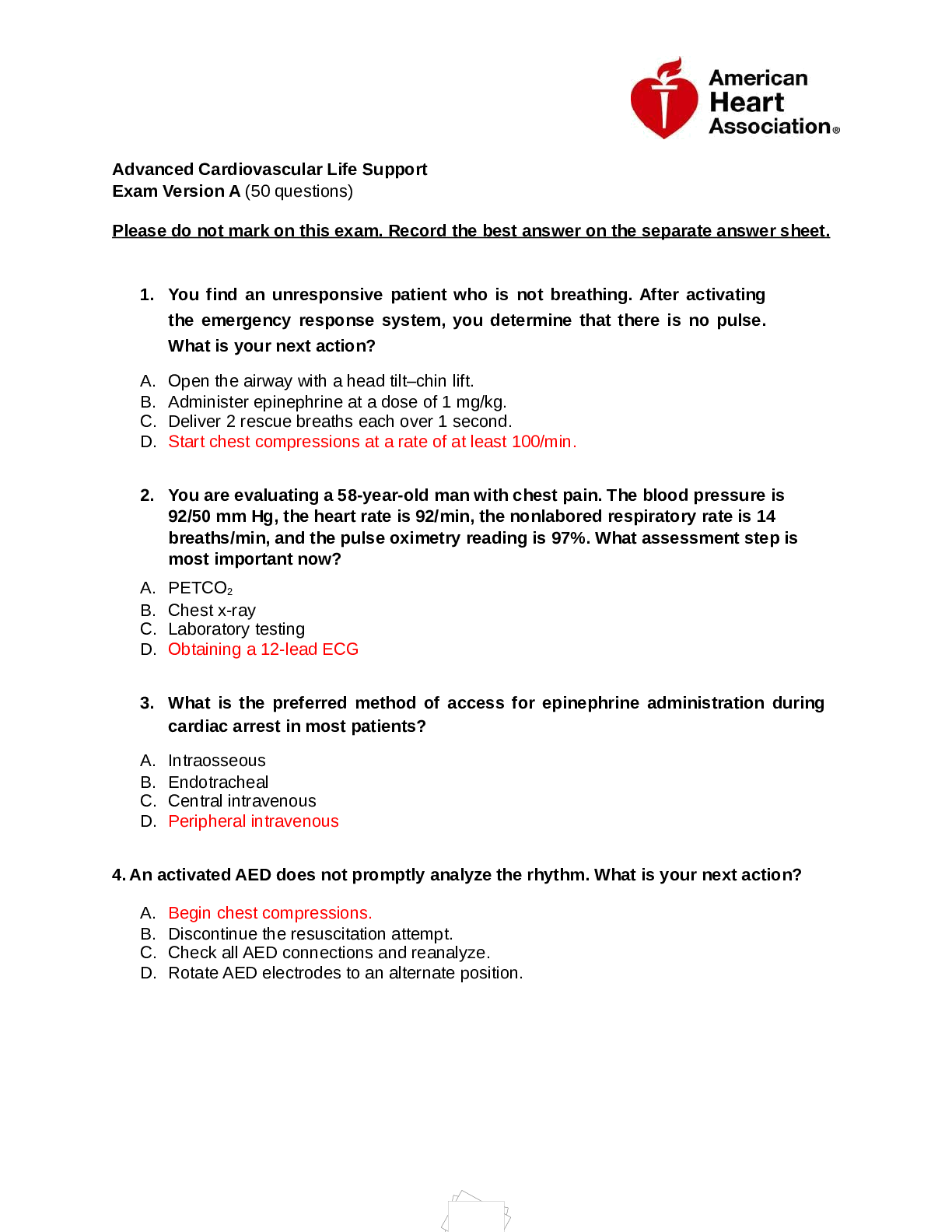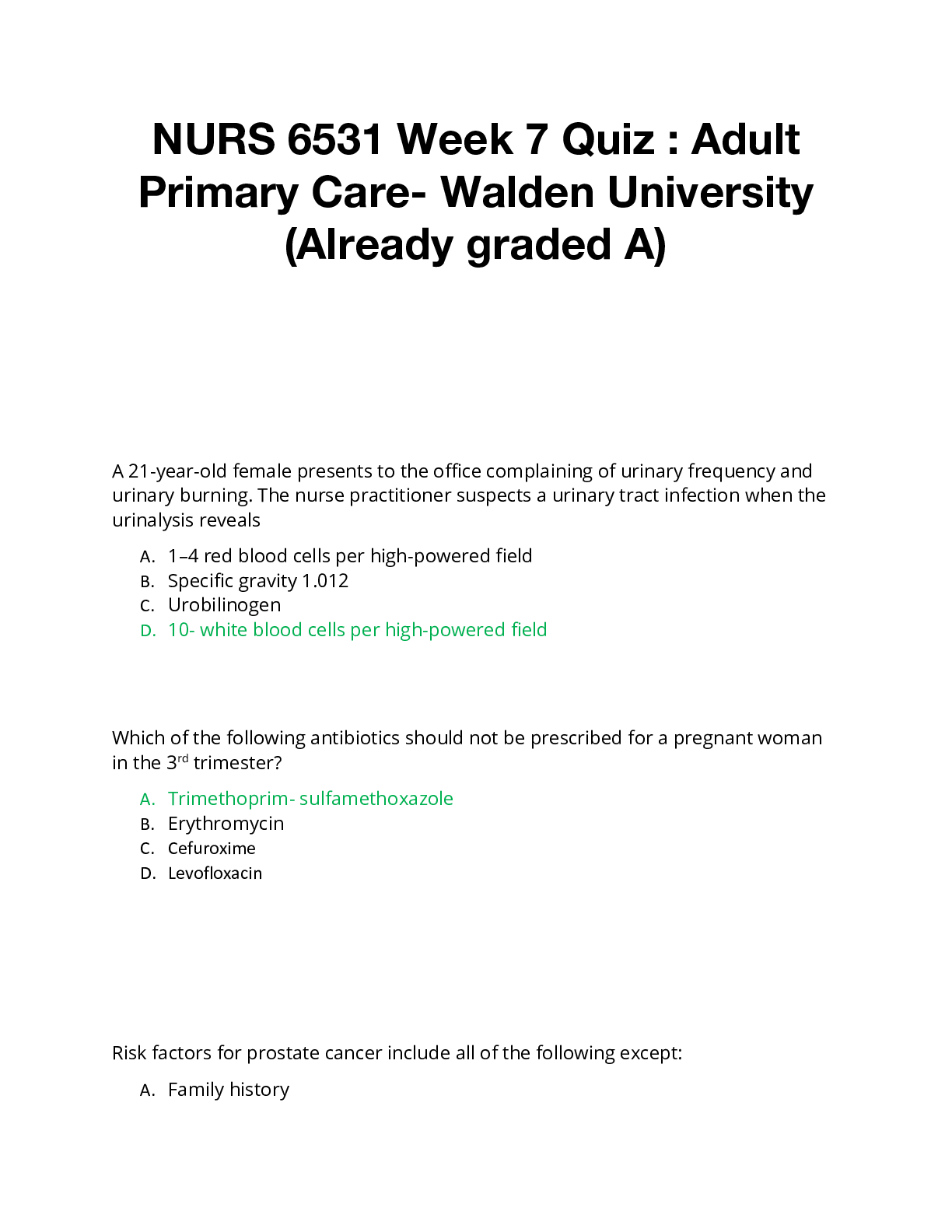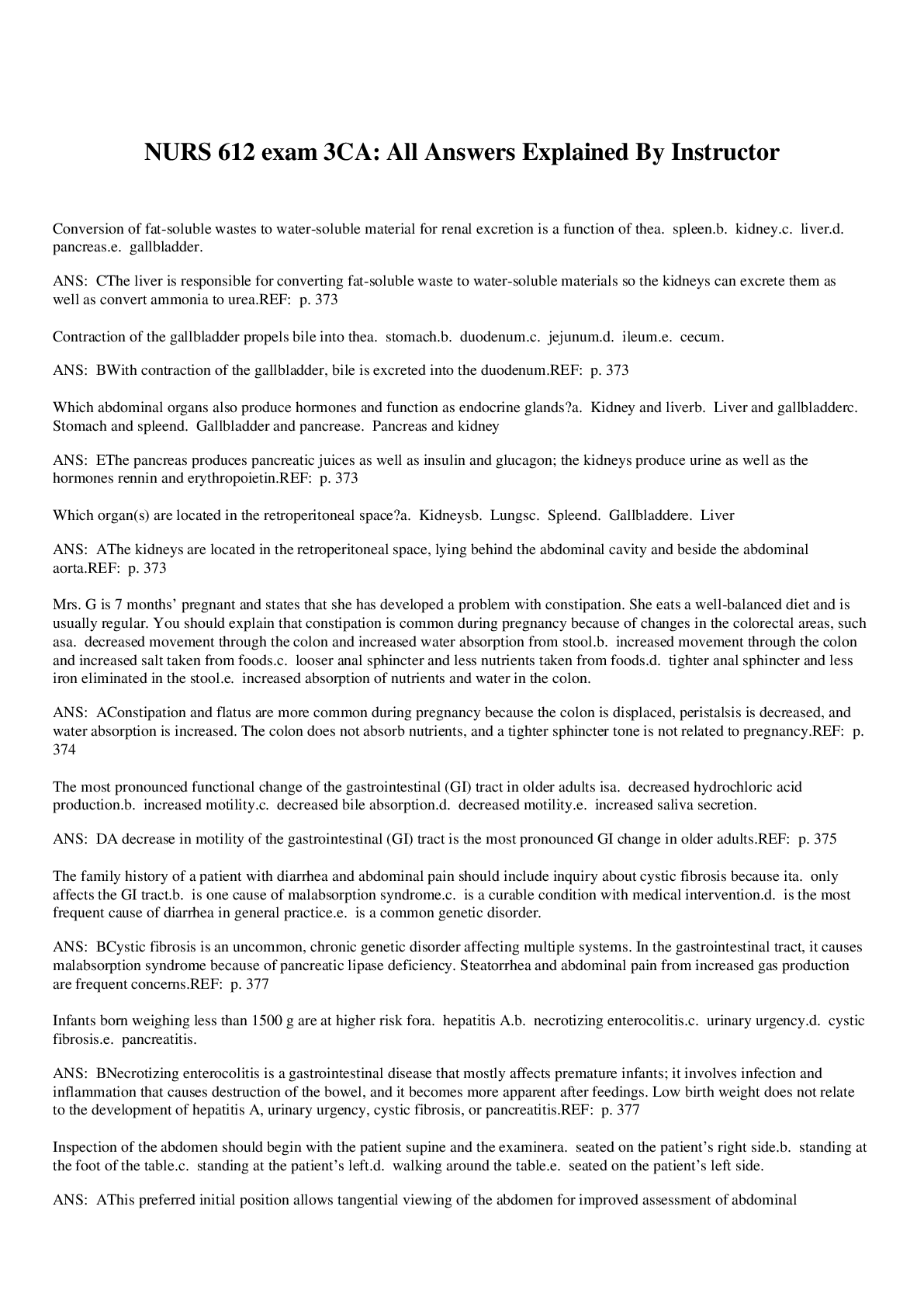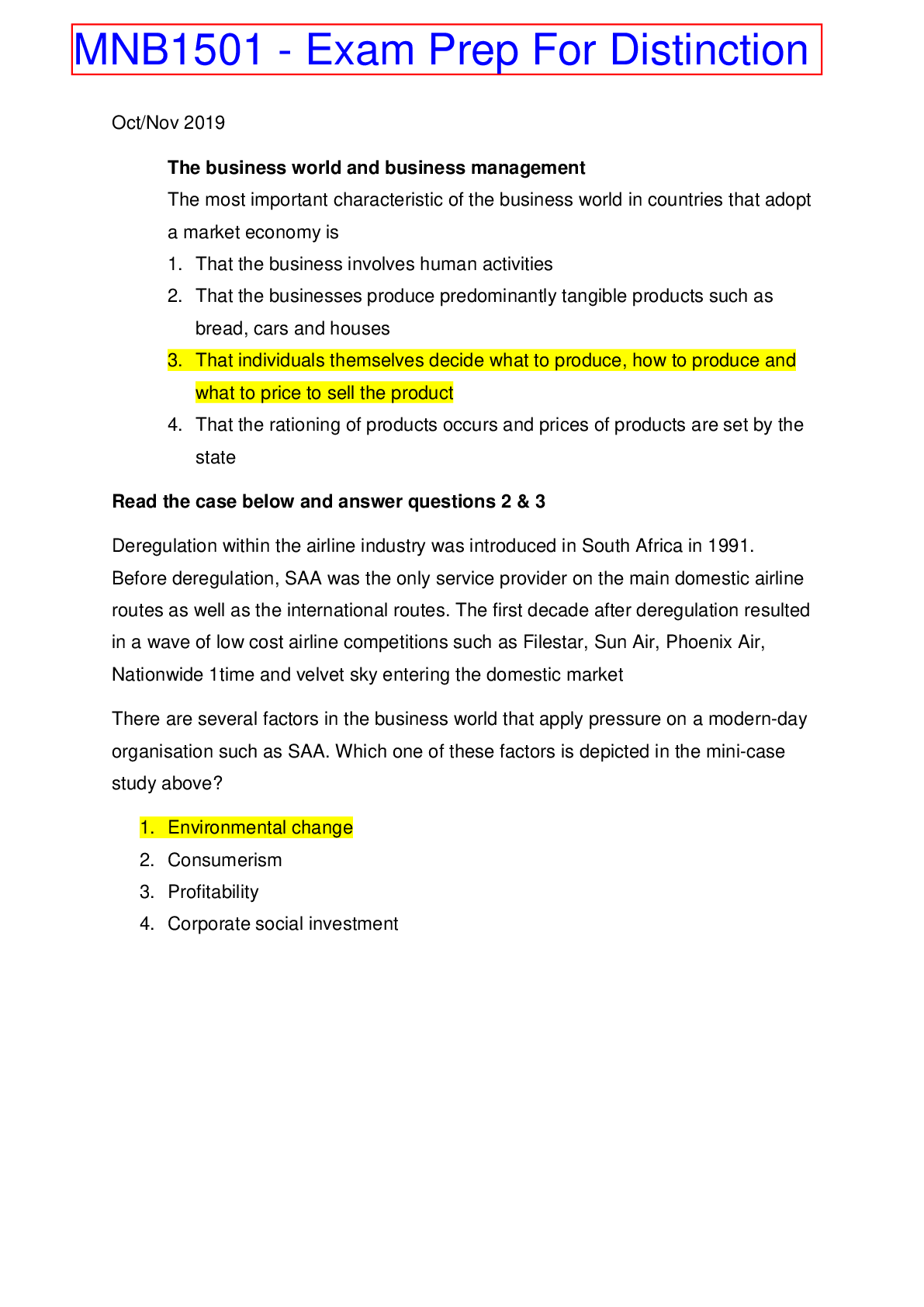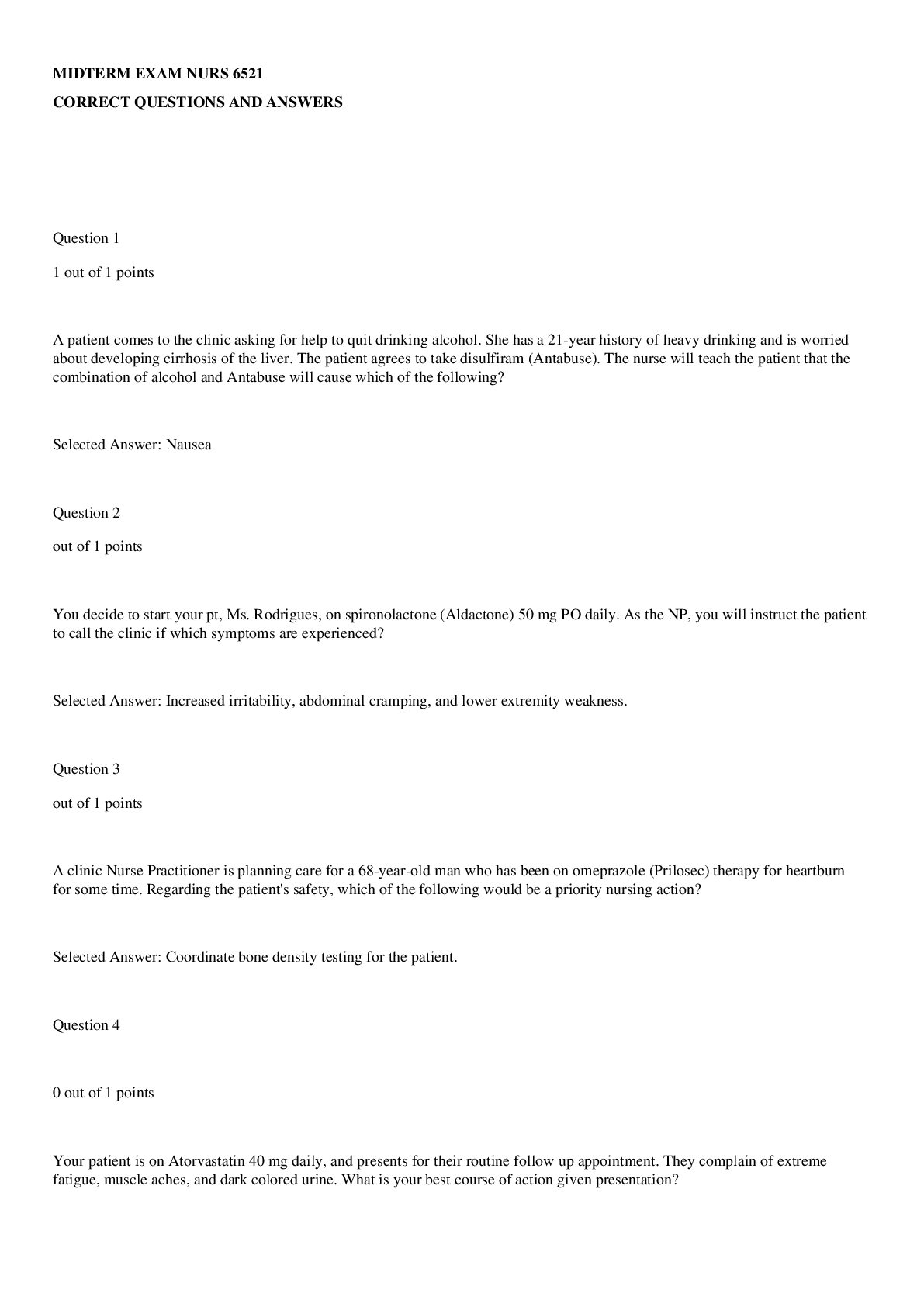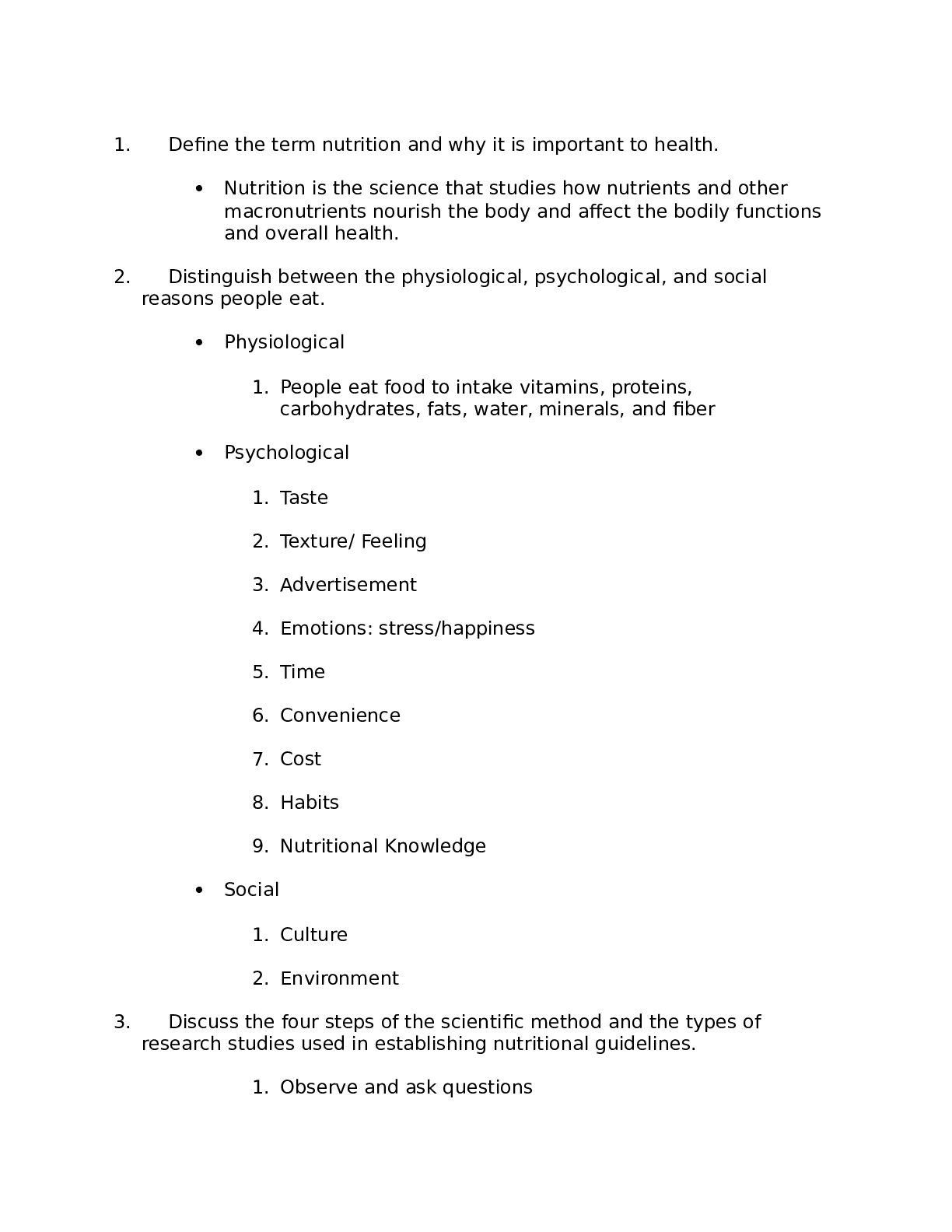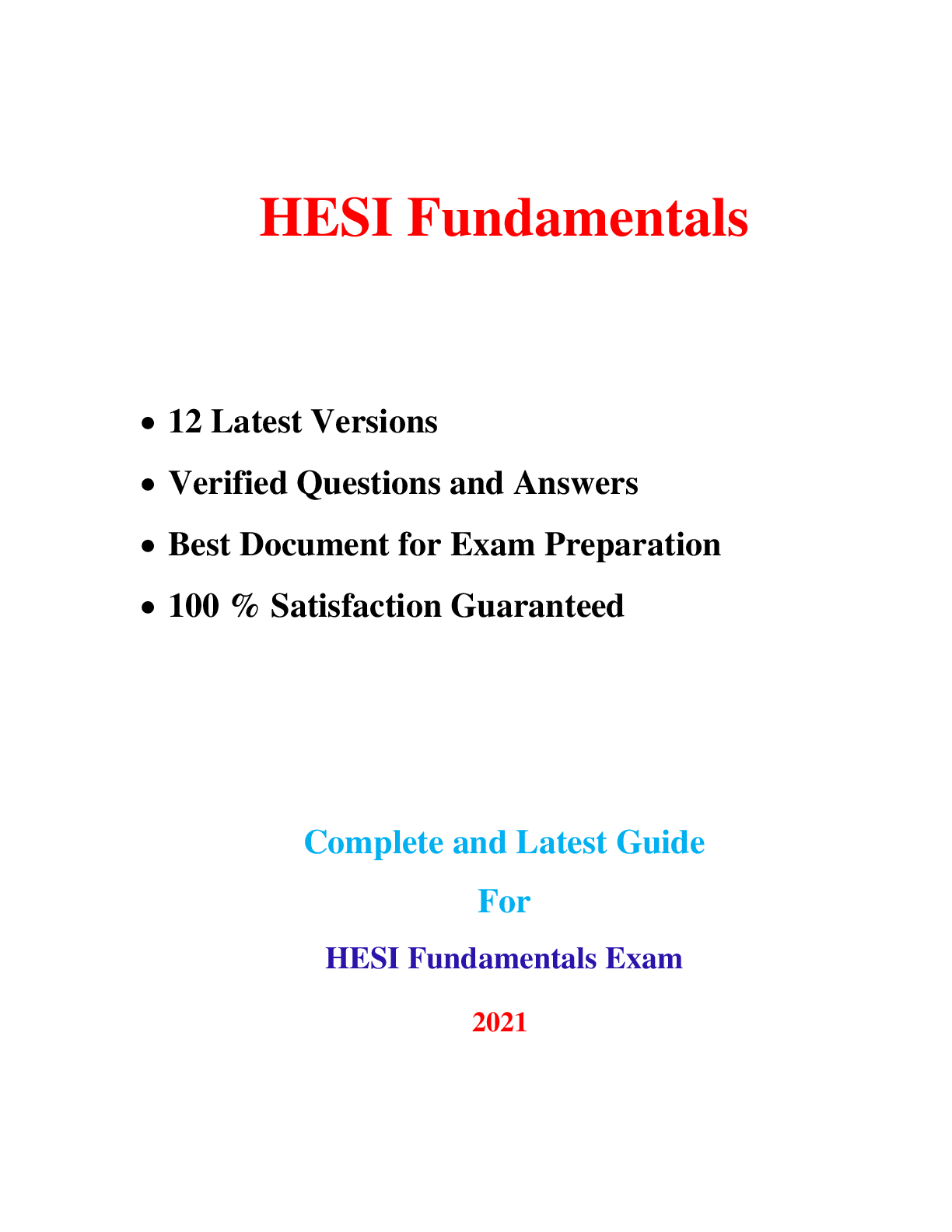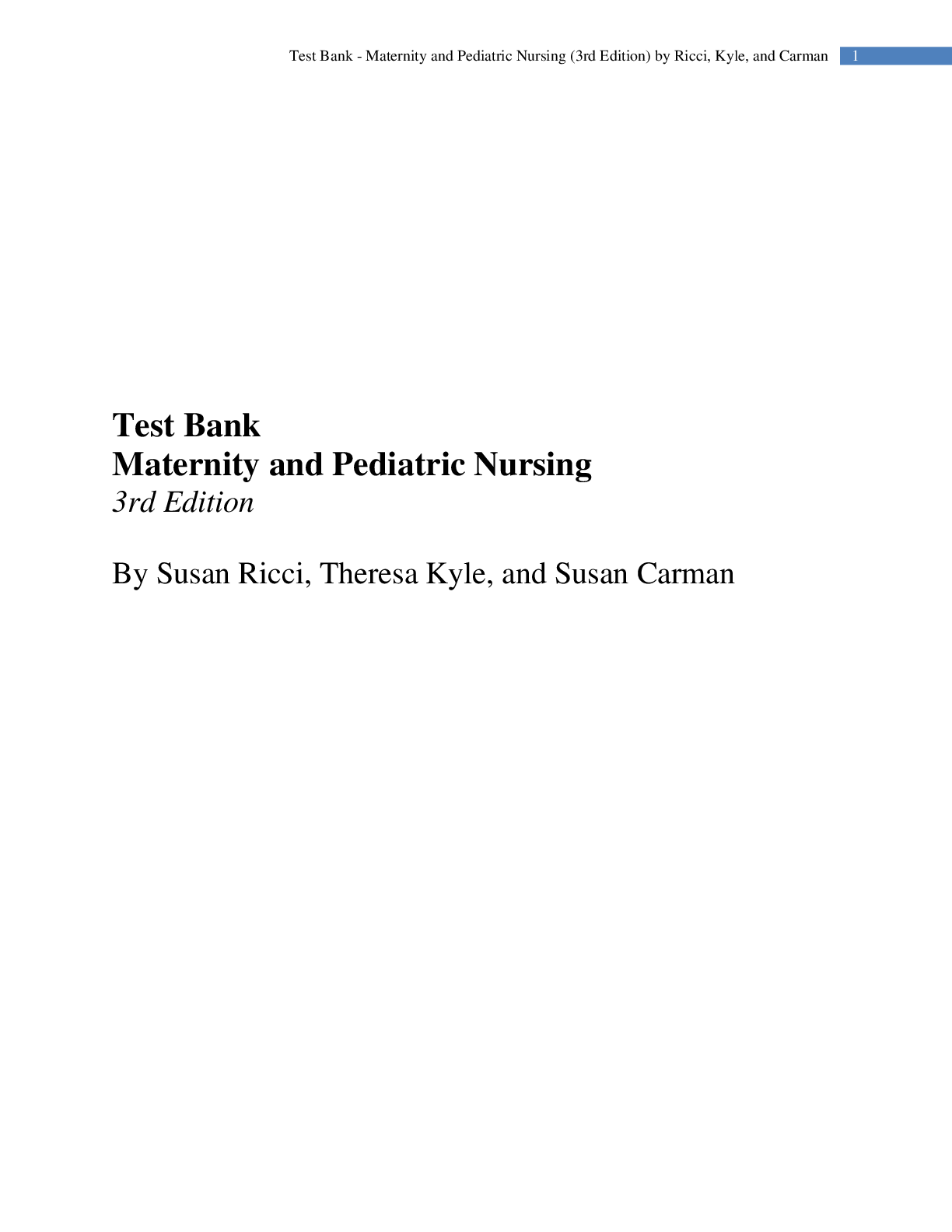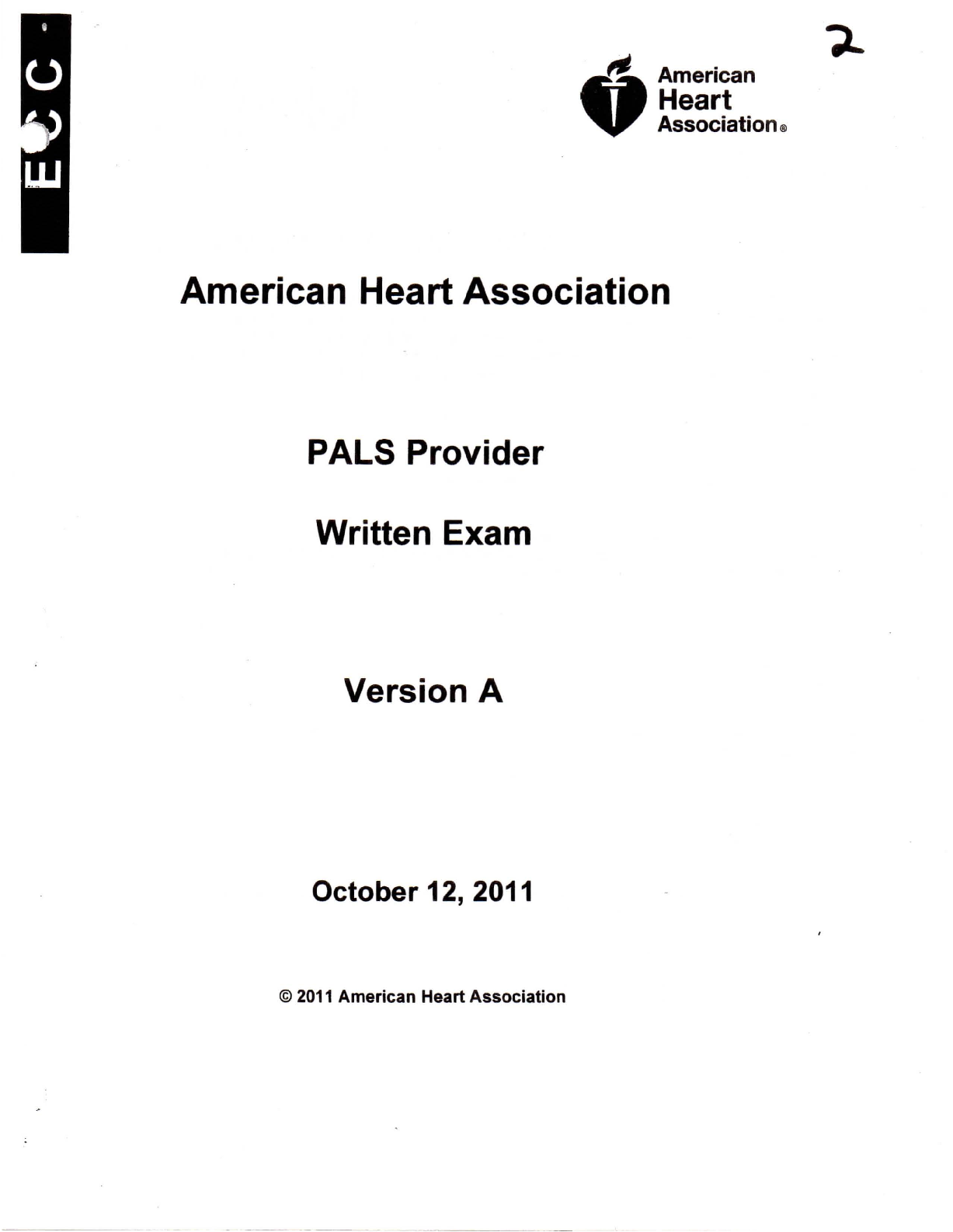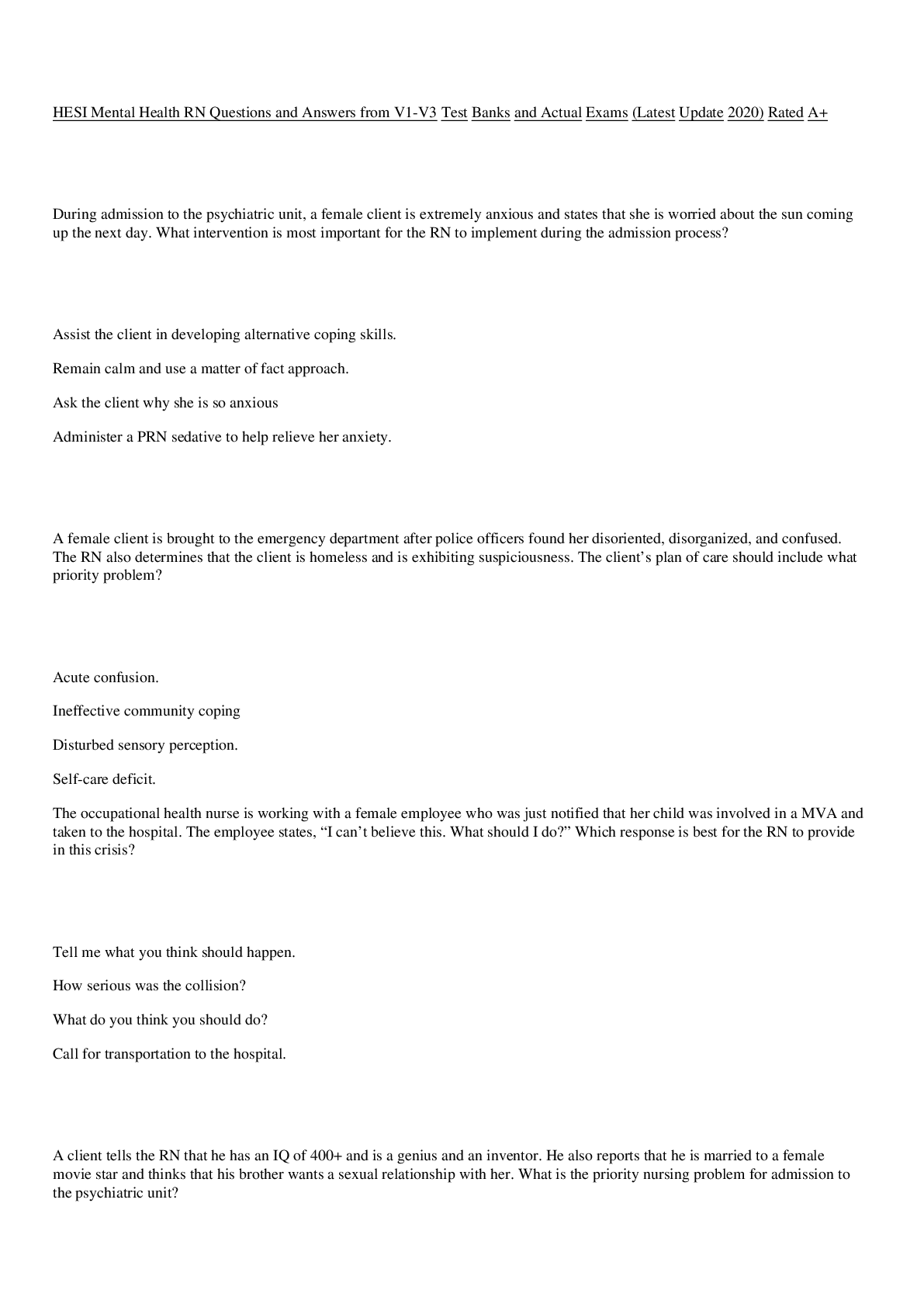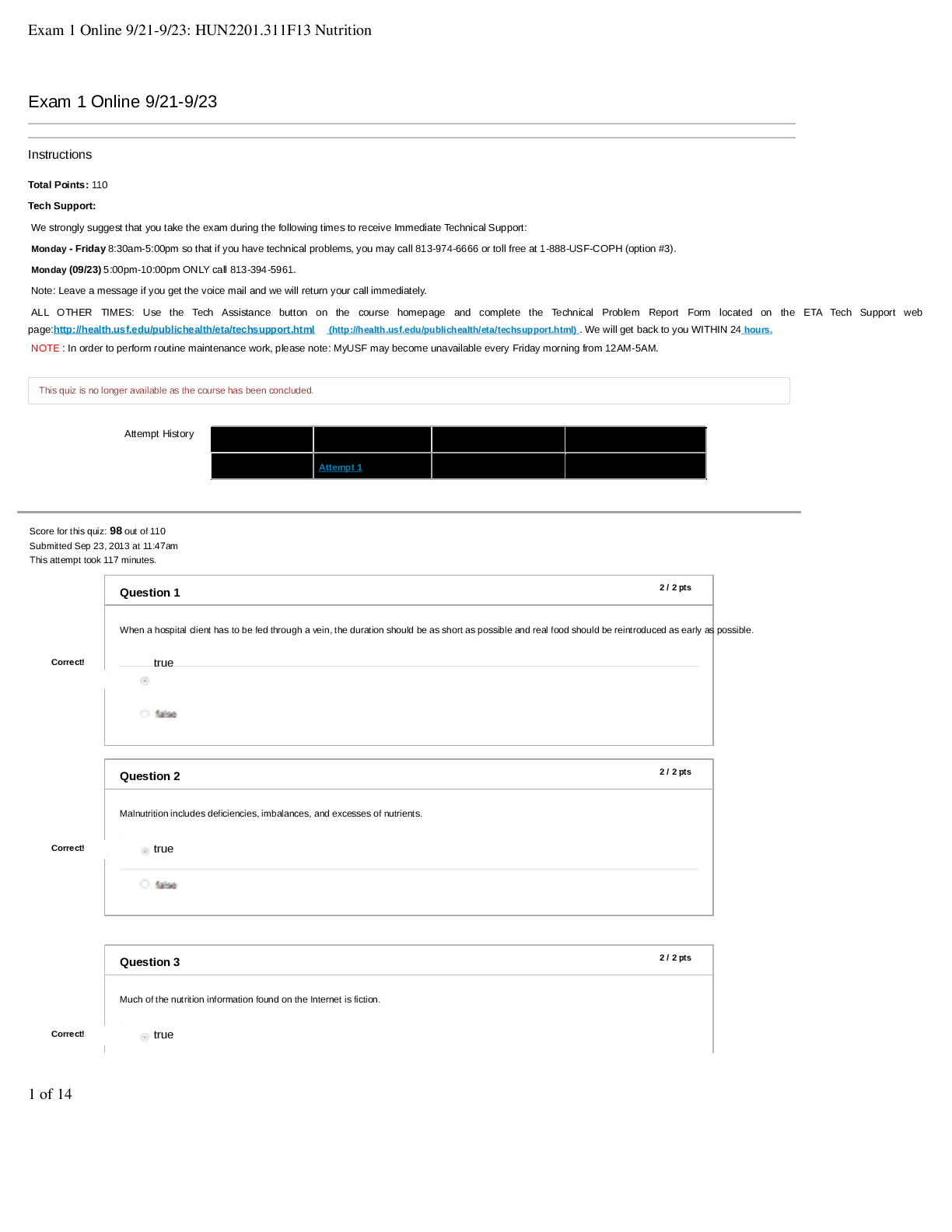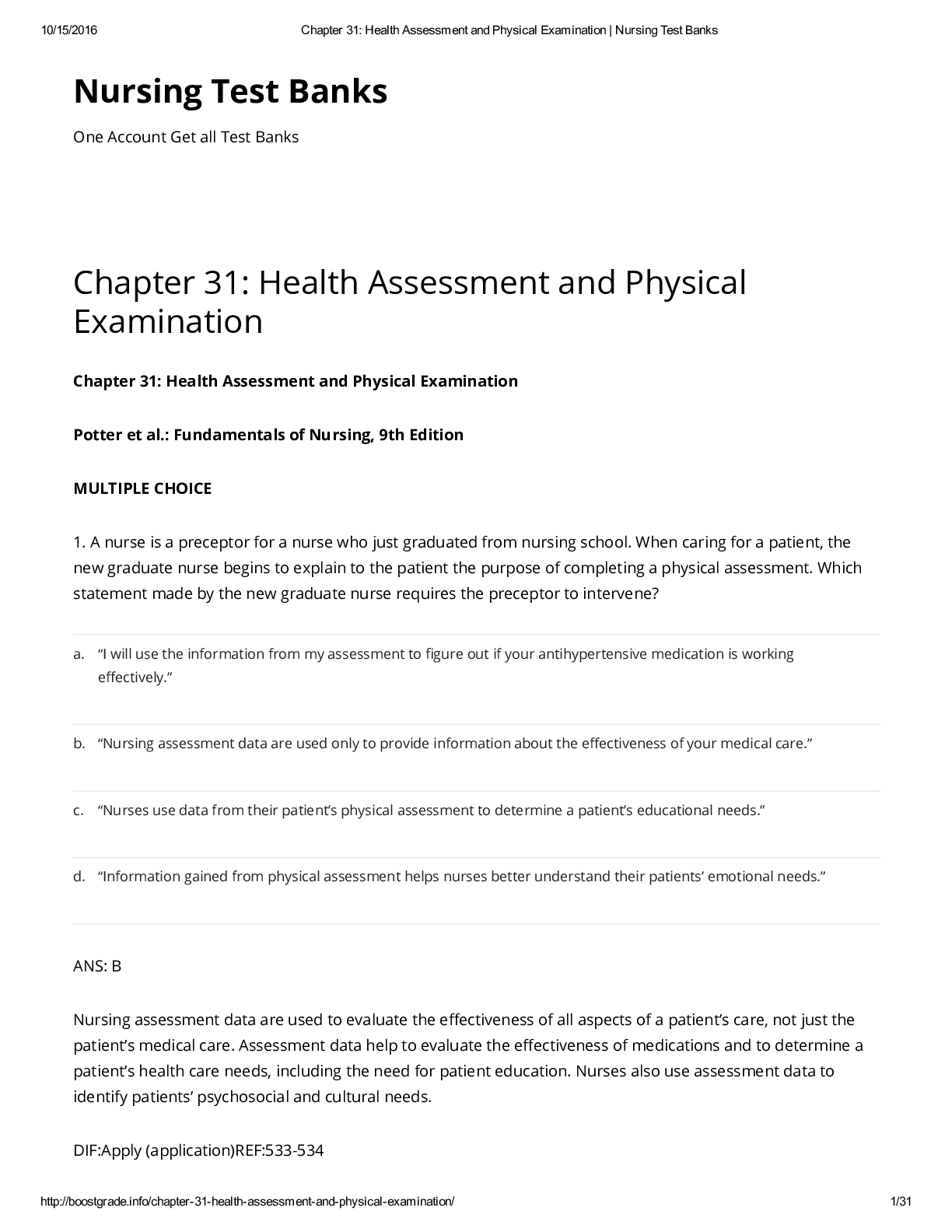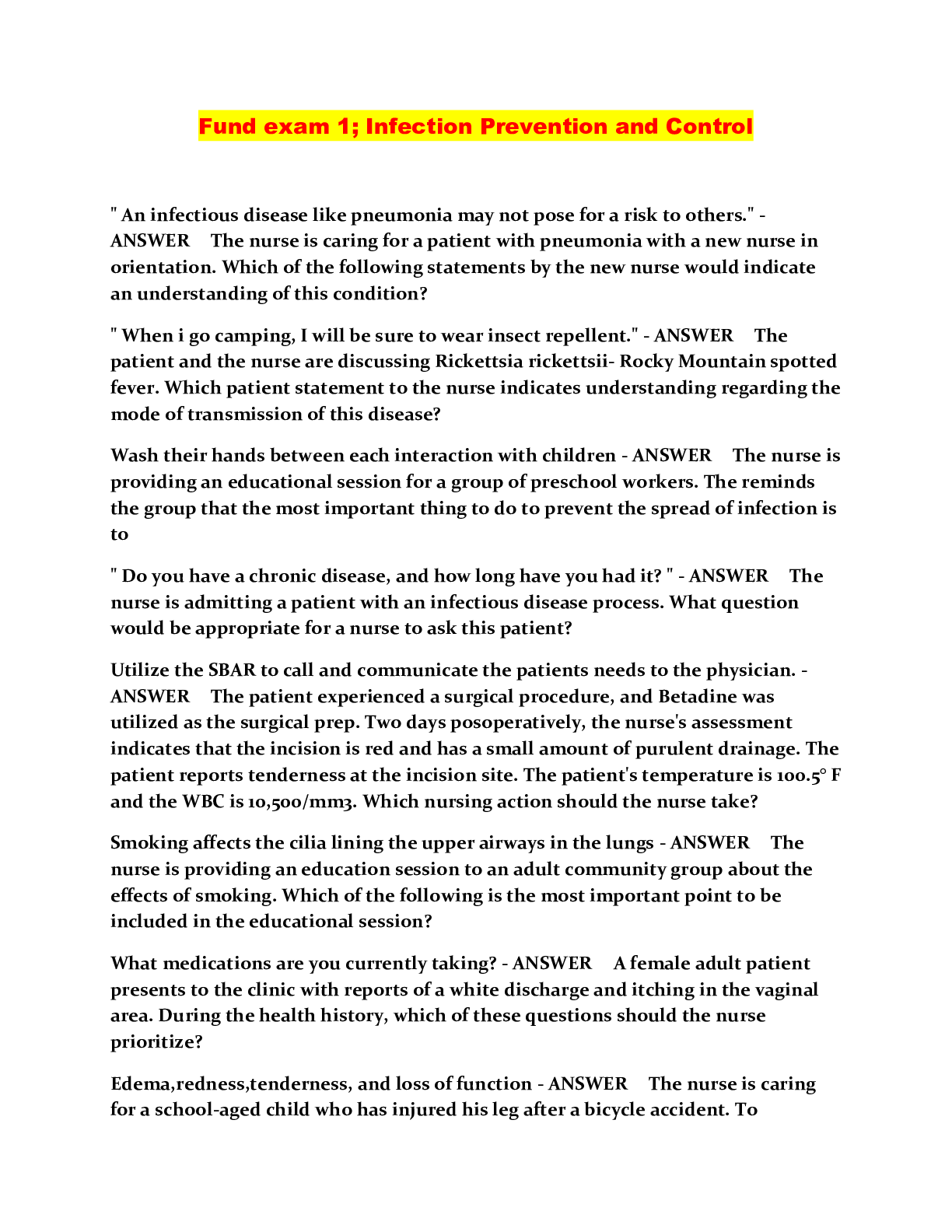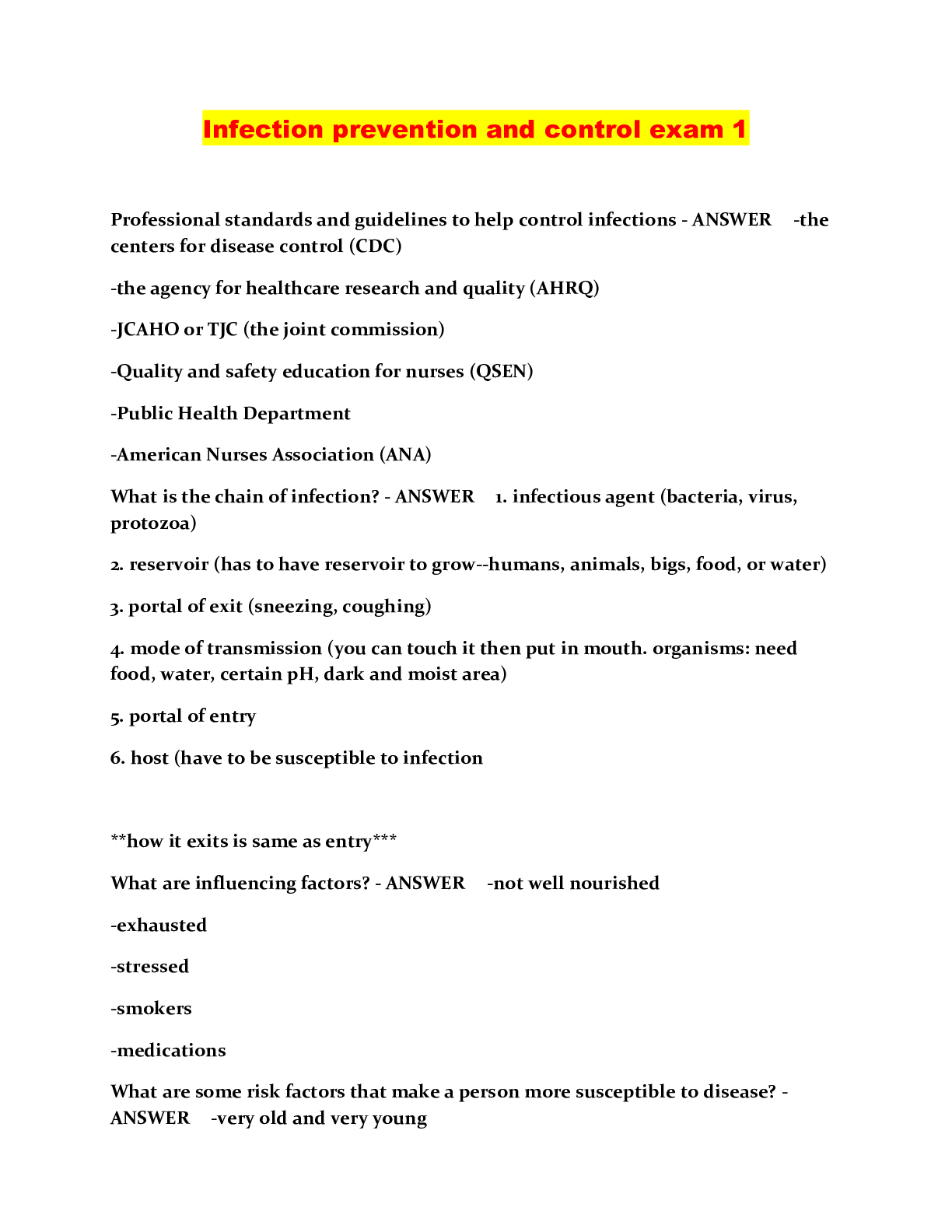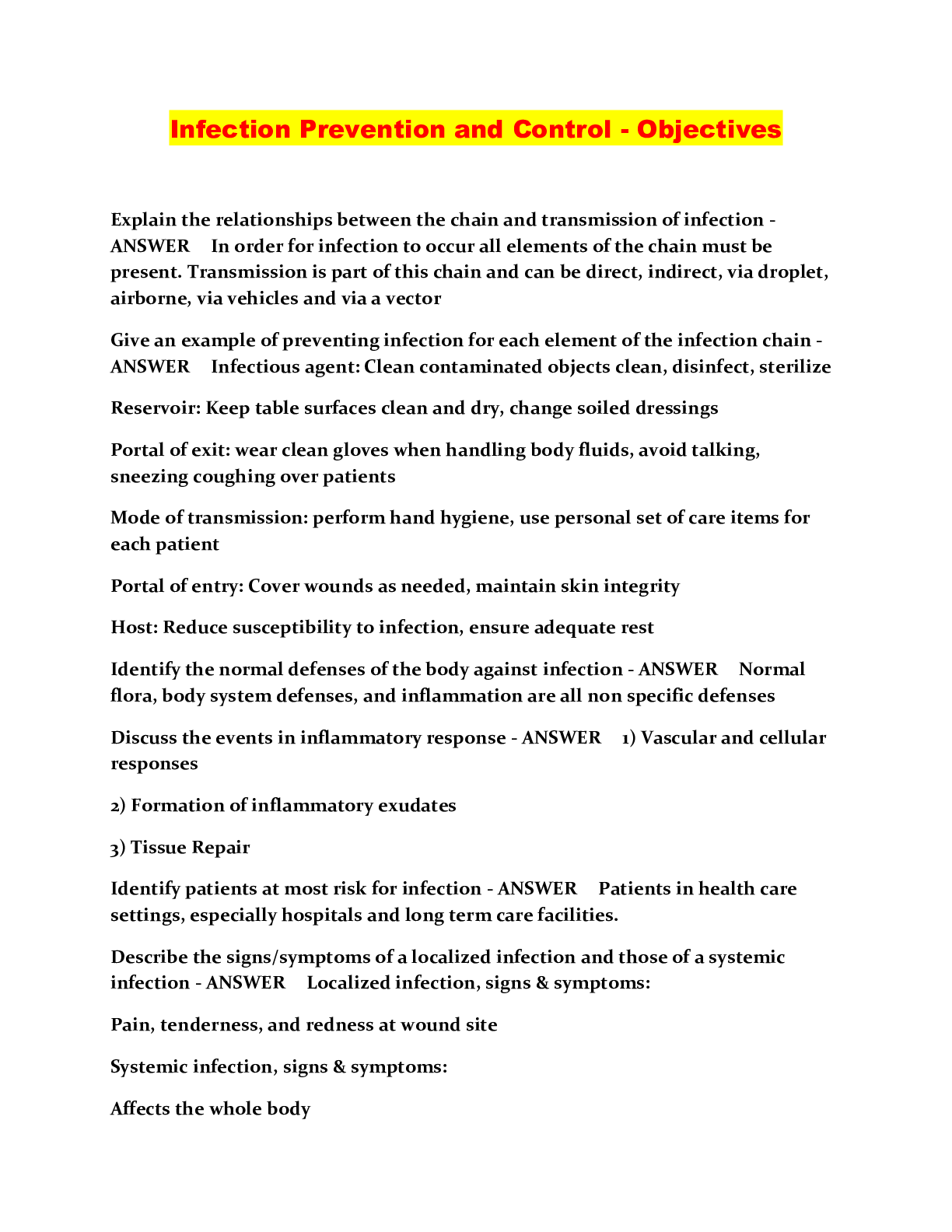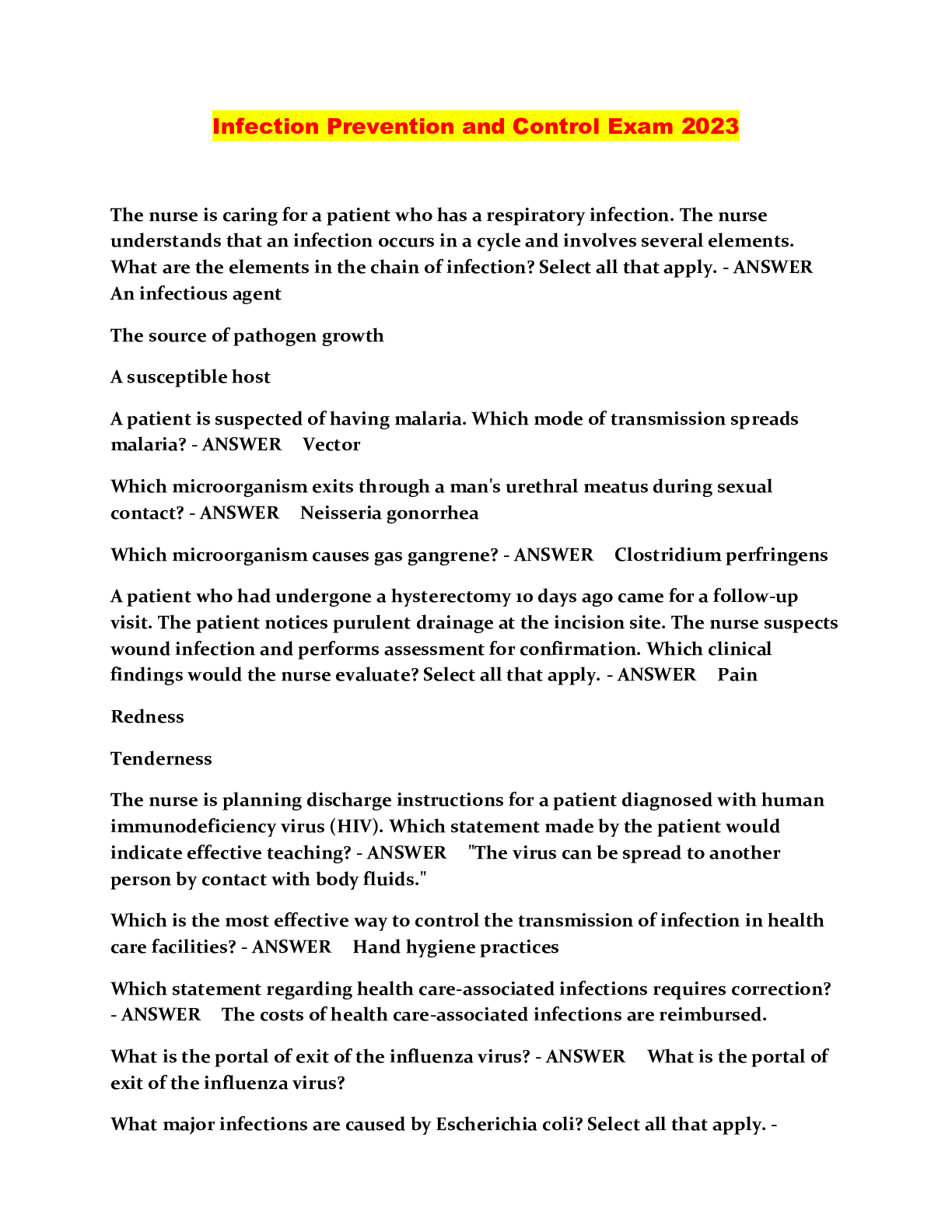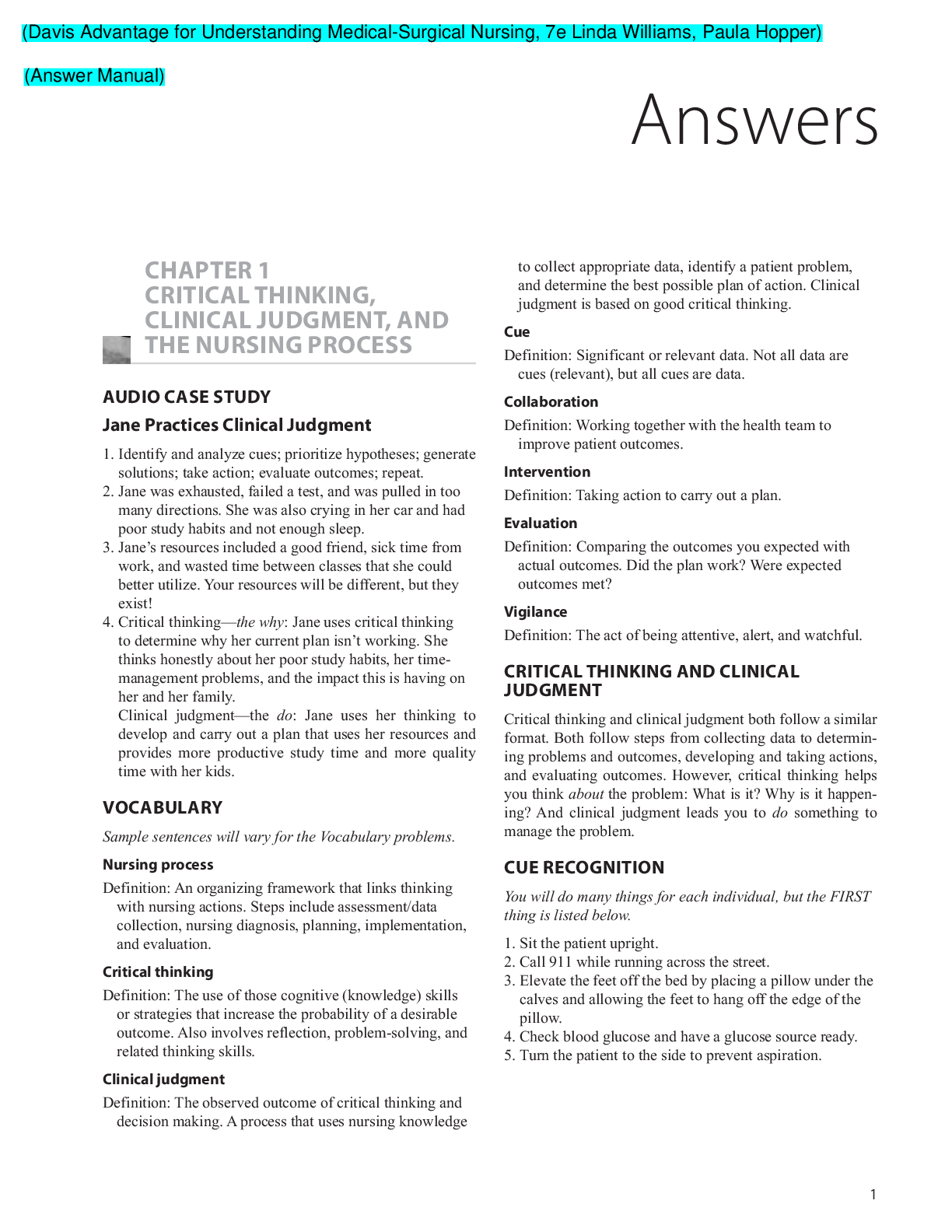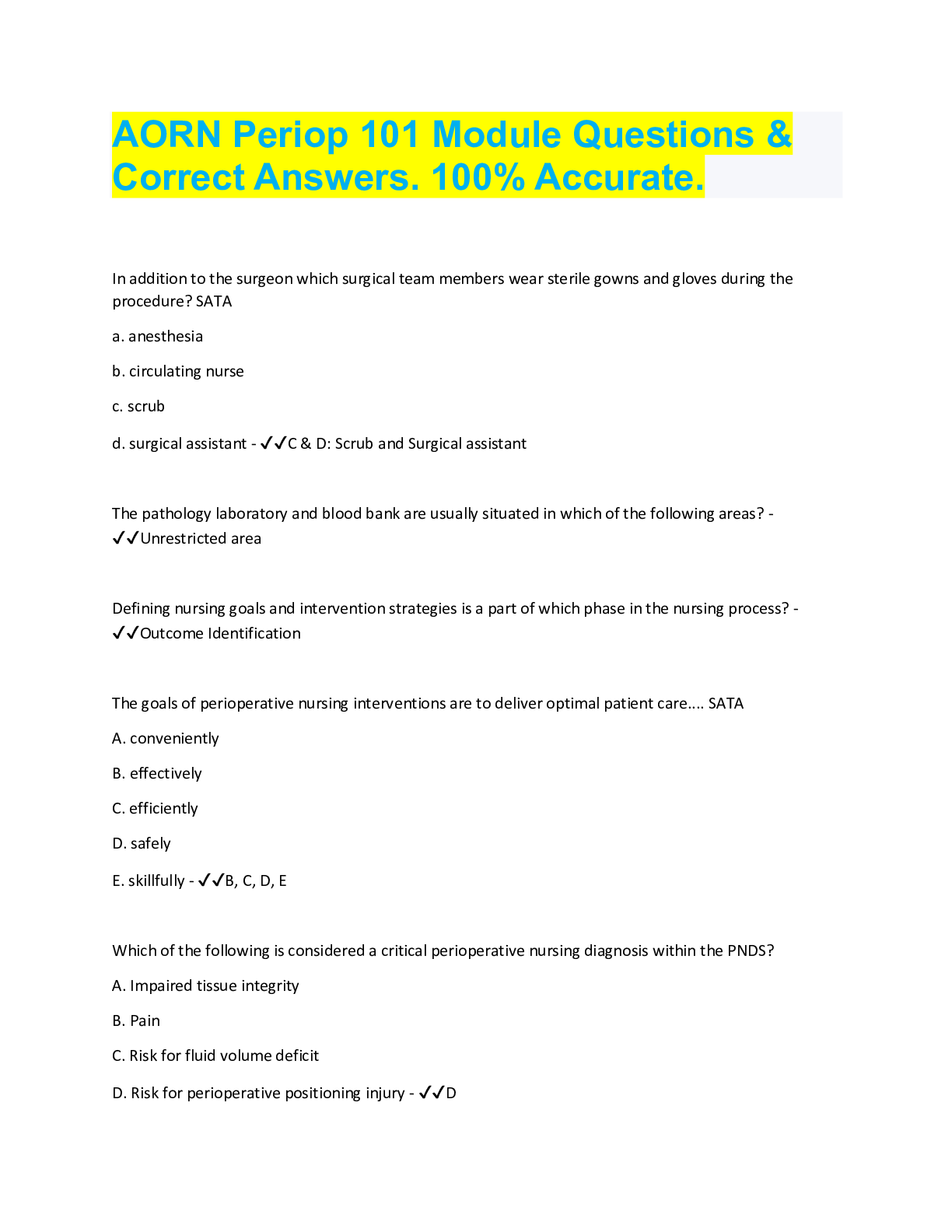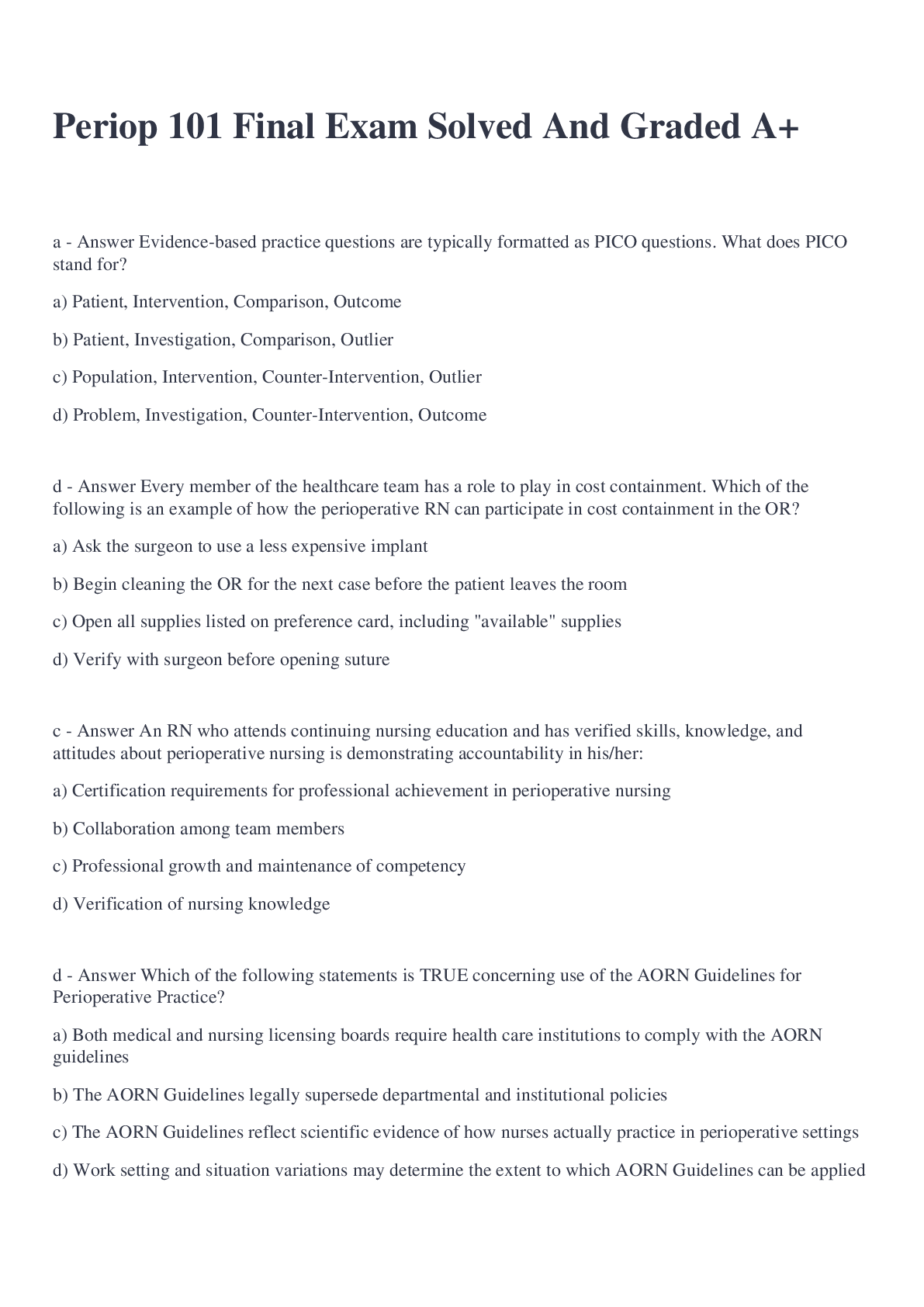*NURSING > QUESTIONS & ANSWERS > Chapter 17: Infection Prevention and Control in the Hospital and Home (All)
Chapter 17: Infection Prevention and Control in the Hospital and Home
Document Content and Description Below
1. When the patient complains of vague symptoms of malaise and fatigue and has a low-grade fever, but has no other specific signs of illness, the nurse suspects that this patient is in the prodromal... phase of infection (the time immediately before the illness is diagnosed). The nurse should include in the plan of care to: a. increase assessment for specific signs of illness. b. increase fluid intake. c. place the patient in isolation. d. report findings to the Infection Preventionist Officer. 2. The nurse is aware that the patient most at risk for a health care–associated infection (HAI) would be the: a. 45-year-old in traction for a fractured femur. b. 56-year-old with pneumonia who is receiving oxygen by mask. c. 65-year-old with a Foley catheter. d. 70-year-old with congestive heart failure attached to a monitor. 3. The most effective part of infection control to reduce the incidence of health care–associated infections (HAIs) is to: a. use surgical asepsis for care of patients outside the operating room who are most at risk for an HAI. b. put all patients with wounds or invasive procedures on Transmission-Based Precautions before they become infected. c. place an alcohol-based hand sanitizer solution in every patient room. d. use proper hand hygiene before and after caring for any patient, before donning gloves and after their removal. 4. The nurse cautions that a person in the incubation period of an infection: a. has identifiable signs of a specific illness. b. can transmit the disease although he or she does not feel ill. c. will seek medical attention for the relief of symptoms. d. will always exhibit symptoms within 48 hours. 5. The nurse clarifies that the difference between the use of earlier types of isolation procedures and the use of current Standard Procedures plus Transmission-Based Precautions as outlined by the CDC: a. is that new diseases have continued to appear for which the older isolation techniques were ineffective. b. is based on the premise in the new procedures that all body substances except sweat may be infectious, even when the person is not known to have a specific disease. c. is complicated and hard to follow. d. is based on newer knowledge of how HIV is spread, to better protect health care workers from blood-borne pathogens. 6. A patient who has active primary tuberculosis is placed on Airborne Precautions. In addition to observing Standard Precautions for this patient, the nurse expects that: a. the patient can be in a room with a roommate, if both persons wear masks. b. a special particulate filter mask (respirator) will be worn by anyone entering the room. c. the patient may leave the room freely as long as the patient wears a mask at all times. d. no mask is needed unless performing close contact nursing care. 7. The nurse performing a surgical scrub is aware that the average time for the scrub is: a. 3 minutes. b. 5 minutes. c. 6 minutes. d. 7 minutes. 8. A patient has a nursing diagnosis of Infection, related to inadequate primary defenses, as evidenced by surgical incision and intravenous (IV) line access. An appropriate nursing intervention for this patient is to: a. assess and document skin condition around the incision and IV site at each shift. b. limit visitors to immediate family to decrease exposure to infection. c. require the use of a facemask by nursing staff when they are providing care. d. maintain “clean” technique in the change of wound dressing and IV site. 9. The correct way to handle soiled linens in the room of a patient who is on Contact Precautions is for the nurse to: a. shake out the linens before placing them in a designated laundry bag to ensure that there are no plastics or valuables caught in the sheets. b. wear a gown to protect the uniform and wear barrier gloves to roll the soiled sheets together and place them in the designated container. c. remove the soiled sheets using barrier gloves and to keep the linens away from the uniform and then place them in a laundry bag held by another nurse outside the room. d. carry the soiled sheets directly to the unit laundry area before removing the personal protective equipment (PPE). 10. A patient on Airborne Precautions says to the nurse, “I feel like I’m going crazy cooped up in here. I feel like just sneaking out and finding someone to talk to.” The best response by the nurse is: a. “You would be jeopardizing everyone you come into contact with. You could give a lot of innocent people your disease.” b. “It won’t be long before you can safely get out of here without being a danger to others.” c. “You must be feeling bored being shut up in here. Have you been following the wonderful season our football team has been having?” d. “I know just how you feel. Sometimes I can’t get outdoors because of the rain, and it’s so hard being cooped up.” [Show More]
Last updated: 1 year ago
Preview 1 out of 13 pages

Reviews( 0 )
Document information
Connected school, study & course
About the document
Uploaded On
Jul 22, 2022
Number of pages
13
Written in
Additional information
This document has been written for:
Uploaded
Jul 22, 2022
Downloads
0
Views
29

